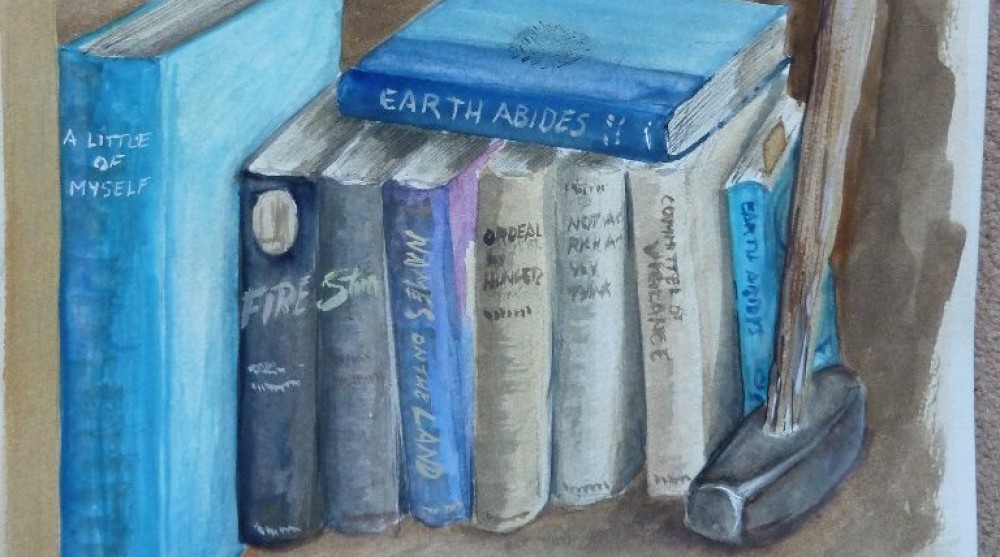Paul F. Starrs is a distinguished, award-winning geographer and beloved teacher at the University of Nevada, Reno. He is one of the few who’ve attended legendary Deep Springs College. He has also been a GRS follower and supporter for decades.
In a recent email, Paul referred to those who GRS has influenced so deeply as “First Stewartians,” meaning, I suppose, that we who have discovered and preached about GRS for decades will be the Wise Old Men and Women when Stewart is widely-discovered and lavished with praise, even by the NY literary establishment.
At this writing, there is no formal GRS study or appreciation group. There have been two: The George R. Stewart Fan Club and The Friends of George R. Stewart.
Vic Moitoret survived the World War II sinking of TWO aircraft carriers. Inspired by Stewart’s Storm, he went on to become Chief Meteorologist of the U.S. Navy. (A small black book listing books which most influenced him – Storm being at the top of the list – survived both sinkings with him, because he wouldn’t leave it behind.) After retirement he founded The Friends of George R. Stewart and began setting up correspondence with others who felt the same passion for GRS.
When Vic left the scene, Bob Lyon stepped in. I had not been involved in the Fan Club; but Ted – Theodosia – Stewart connected me with Bob. He introduced me to other GRS followers, like distinguished San Francisco Attorney Frank Sloss, Historian Ferol Egan, and The Pilgrim – Stewart Scholar Steve Williams of England. Bob put together some important and wonderful events, including a special GRS Symposium at the Western Literature Association Conference which resulted in a fine collection of papers. But chili called. He bacame a master participant in chili cookoffs, and the Friends faded away.
With the publication of the George R. Stewart biography (two biographies, in fact; the other, by Dr. Fred Waage, is reportedly more academic but gets the nod for being the first), the possible production of a film or mini-series based on Earth Abides, and the simple accrual that happens when individuals snowball into a group, there seems to be an increasing number of people who might be interested in a few, informal meetings or events related to George R. Stewart, his life, his family, his work, his places.
So here’s to the possible “First Stewartians.” If you have any interest, even in informal gatherings or an online community of some type, feel free to send a comment.


